ID:200 Wise use of coastal Ecosystems for Disaster Risk Reduction: mainstreaming and problems
- Date
- 2015-03-15(Sun)
- Time
- 13:10-15:50(Door Open 13:00)
- Venue
- Tohoku University Kawauchi-kita Campus C206
Report has released
- Language
- Japanese
- Translation
- Simultaneous interpretation
Contact/Entry
E-mail:eac*g-mail.tohoku-university.jp(Please replace * to @)
http://gema.biology.tohoku.ac.jp/center/symposium/symposium150315/symposium150315en.html
Organization
Tohoku University Life Science
Co-organization
Endorsed by Ministry of the Environment Tohoku Regional Environment Office, International Union for Conservation of Nature and Natural Resources, and Conservation International Japan
Tags
PDF file
Report
| Number of participants | 130 |
|---|
The Great East Japan Earthquake caused huge damage to the coastal area of northeastern Japan, where the lives, culture and industry of the local people have long been dependent on biodiversity and coastal ecosystems. We believe efforts to recover from this disaster should be done with conservation of both biodiversity and ecosystem services. The building of large sea walls as protective measures is often counter to the environment and the area’s natural beauty.
Recently, Ecosystem-based Disaster Risk Reduction (Eco-DRR) and Ecosystem-based Adaptation for Climatic Change (EbA) have drawn attention worldwide. The aim is to use nature‘s own ecosystem defenses to protect against future disasters. Eco-DRR and EbA are applicable for many areas in the world, and in general more cost effective and resilient when compared to man-made defenses. They also ensure rich biodiversity and ecosystem services supportive of human life.
In our discussions we reviewed the ecological impact of the Great East Japan Earthquake and the recovery of both natural resources and human society. And we recognize the effectiveness of Eco-DRR to the recovery of both. We urge all stakeholders with an interest in reducing damage caused by natural disasters to consider Eco-DRR as a secure means of protecting both the beauty of the local environment and its natural ability to protect against future disasters.
Downloads
Outline
Recent progress in concepts and practices of Ecosystem-based Disaster Risk Reduction in the world and Japan is introduced and discussed with examples of Minami Sanriku coast and Sendai bays where an extremely large tsunami hit in 2011. Based on the discussion, participants will propose the way for mainstreaming the actions towards Eco-DRR.Detail
13:10-13:20
Opening remarks
Speaker:Dr. Tohru Nakashizuka, Professor, Graduate School of Life Science, Tohoku University
13:20-13:40
Keynote speech “Ecosystem-based Disaster Risk Reduction: New Developments in Science and Policy ”
Speaker:Dr. Fabrice Renaud, Head of the Environmental Vulnerability and Ecosystem Services Section, United Nations University Institute for Environment and Human Security (UNU-EHS)
13:40-13:55
Lecture 1 “Investing in Ecosystem-based Disaster Risk Reduction (Eco-DRR) and Climate Change Adaptation”
Speaker:Mr. Naoya Furuta, Senior Project Officer, International Union for Conservation of Nature (IUCN)
13:55-14:10
Lecture 2 “The Role of Communities in Ecosystem-based Disaster Risk Reduction”
Speaker:Mr. Yasushi Hibi, Vice president, Conservation International Japan,
14:10-14:25
Lecture 3 “Conflict of Eco-DRR Alternative to Huge Coastal Structures and Extent Land Use System in Tunami Disaster Recovery after Great East Japan Earthquake”
Speaker:Dr. Satoquo Seino, Associate professor, Graduate School of Engineering, Kyushu University
14:25-14:35
a break
Reports from Sendai bay and Kesennuma
14:35-14:45
Report 1 “Coastal-ecotone Monitoring as the Source of Eco-DRR: a Case of the Severely Disturbed Sendai Bay Sand-dune Fringe”
Speaker:Dr. Yoshihiko Hirabuki, Professor, Faculty of Liberal Arts, Tohoku Gakuin University & Minami-Gamou Ecotone Monitoring Network
14:45-14:55
Report 2 “Request for Establishment of a Disaster Prevention Park in Gamou”
Speaker:High School Students’ Seawall Study Group in Sendai (Sendai Educational Technology Laboratory)
14:55-15:05
Report 3 “A Perspective on Holistic Applications of Environmental Design as Ecologically Responsible Management of Land, Water and Resources”
Speaker:Mr. Hirose Shunsuke, Collaborative Researcher, Center for Spatial Information Science, The University of Tokyo
15:05-15:15
Report 4 “Role and Future Perspective of ESD Program for the Children in Tsunami Affected Areas of the Great East Japan Earthquake”
Speaker:Ms. Noriko Hata, United Graduate School of Agricultural Science, Tokyo University of Agriculture and Technology
15:15-15:25
Report 5 Reports by the High School Students Participated in “Kodomo Koizumigaku”
15:25-15:50
Summing up and adoption of recommendations


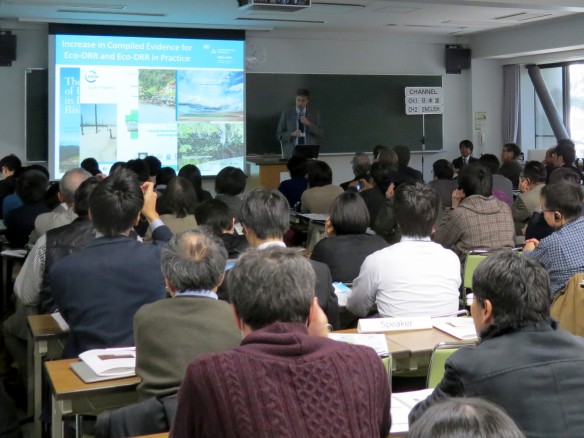
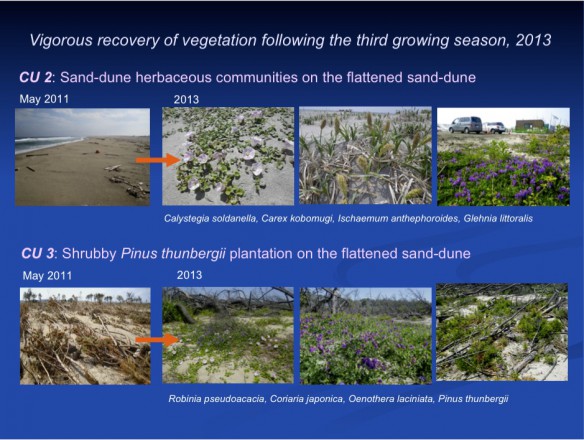
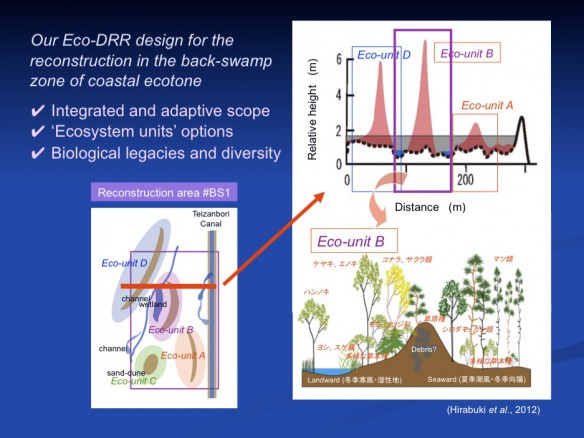
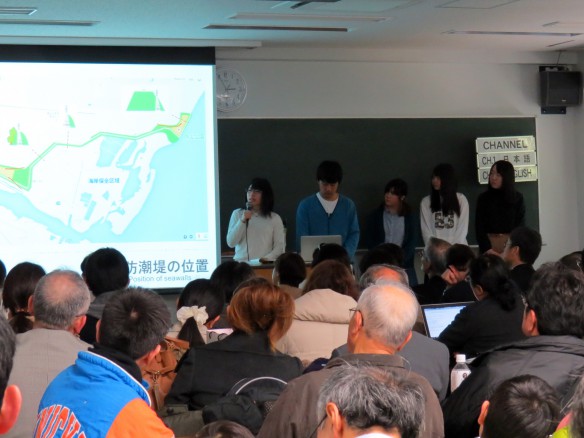
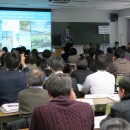
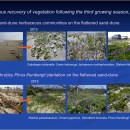
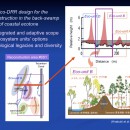
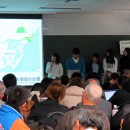
 Flyer
Flyer Pamphlet
Pamphlet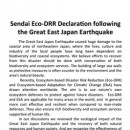 Declaration
Declaration

